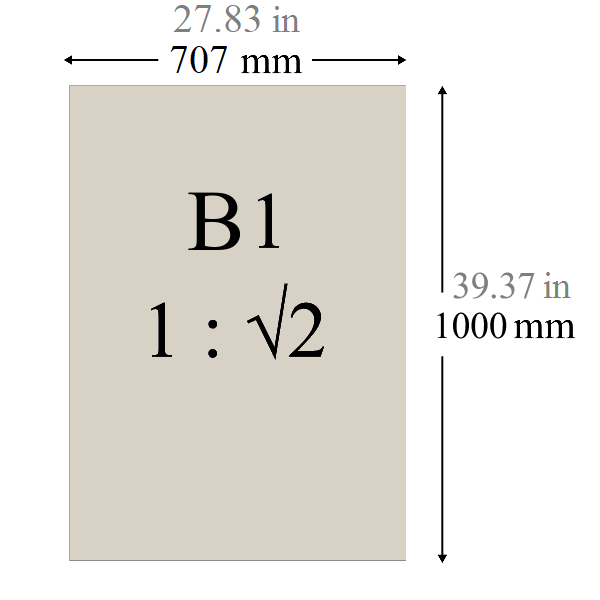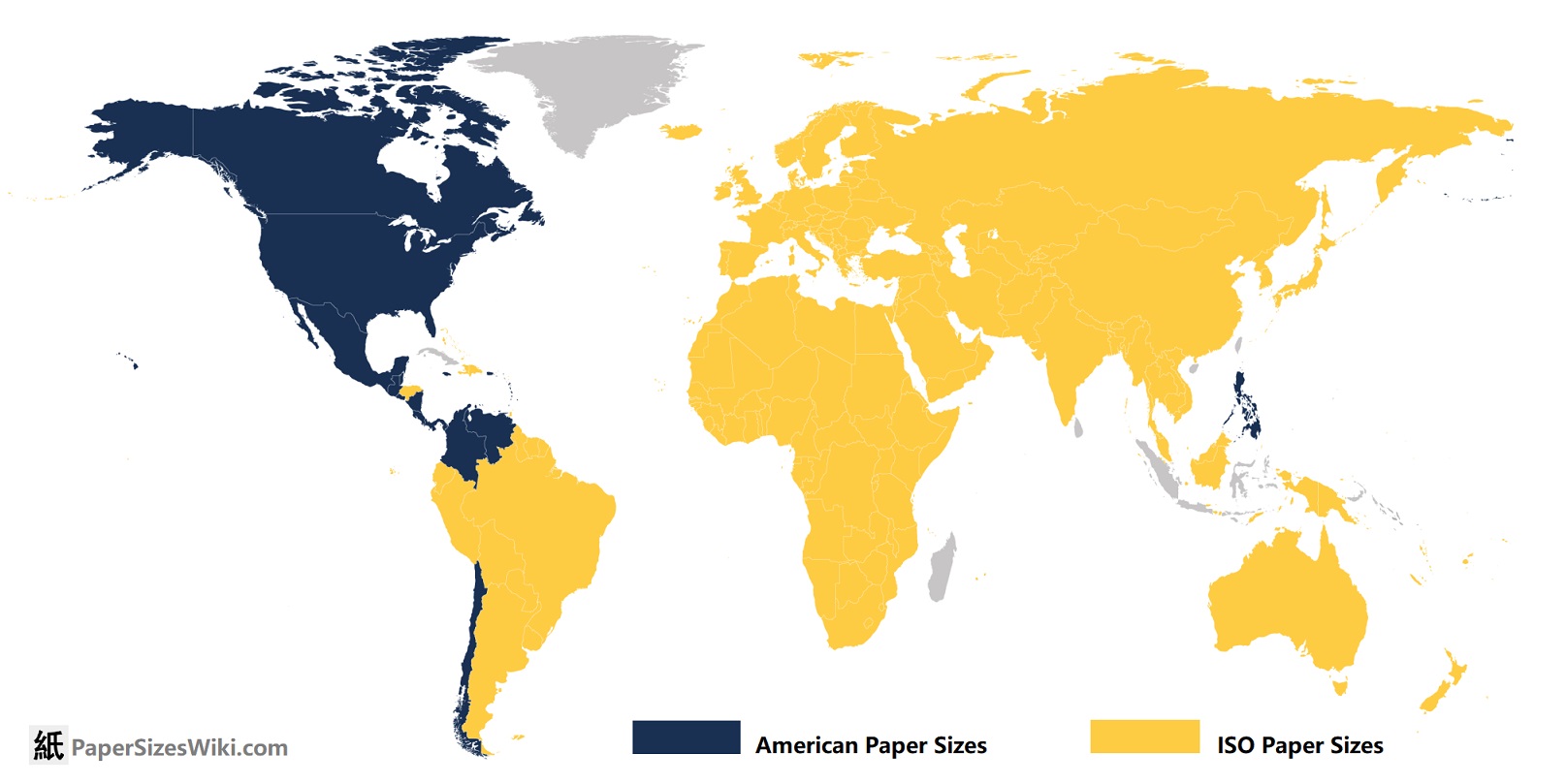What is B1 Paper Size
Definition
The B1 size is part of the ISO 216 international paper size standard and in the scope of B paper sizes, it occupies a middle ground within the B-series of paper sizes. This format is used widely in Europe and other parts of the world that follow the metric system. The size is smaller than the B0 size, but still large enough for a wide range of professional applications.
Dimensions
A piece of B1 paper measures 27.83 x 39.37 in inches, 70.7 x 100 in cm, and 707 x 1000 in mm. While this format is smaller than the B0, it is still large enough to handle the printing of posters, architectural plans, and art prints. The dimensions of B1 paper make it more manageable for everyday use than B0, but still allow for considerable visual impact when printed.
Layout
Drawing of B1 paper size in inches and mm. It is 70.7 x 100 in cm.

Origin and Historical Context
B1 originates from the early efforts of the International Organization for Standardization (ISO) to create a standardized paper format for global use. ISO 216, introduced in the 20th century, laid the groundwork for the B-series of paper sizes. The B-series was initially created in Germany under the DIN 476 standard and later adopted globally. B1 is one of the intermediate sizes in the B-series, providing a balance between usability and scale.
The B-series sizes follow the 1:√2 aspect ratio, which allows each size to be halved to produce smaller sizes like B2, B3, and so on. This aspect ratio makes the B1 size extremely versatile for scaling up or down without losing proportionality, making it a preferred option for various industries.
Uses of B1 Size Paper
The paper with B1 size is used in many professional environments where larger formats are required, but a size smaller than B0 is more practical. Some common uses include:
- Posters and Advertising: B1-sized paper is frequently used for creating posters, advertisements, and other marketing materials. Its large size ensures high visibility while still fitting within common printing equipment.
- Blueprints and Technical Drawings: Engineers, architects, and designers often use B1 paper for blueprints, technical diagrams, and design sketches. Its size is large enough to accommodate detailed work while still being portable.
- Event Materials: In the event planning and exhibition industries, B1 paper is used for banners, signs, and promotional materials that need to be seen from a distance.
- Art Prints and Photography: Artists and photographers use B1 paper for printing large images that require clarity and detail, such as photography enlargements or fine art prints.
Regions of Use
The B1 paper size is primarily used in Europe, with some adoption in other parts of the world. Specifically, B1 paper size is commonly used in countries such as Germany, France, Italy, Spain, and the Nordic countries. It is also used in Australia and New Zealand, which have adopted the ISO paper size standard. However, it’s essential to check the specific paper size standards in each country, as there may be variations in usage and adoption.

B1 Size in inches
27.83 x 39.37 in
B1 Size in cm
70.7 x 100 cm
B1 Size in mm
707 x 1000 mm
B1 Dimensions Table
| Size # | in inches | in mm | in cm |
| B1 | 27.83 x 39.37 in | 707 x 1000 mm | 70.7 x 100 cm |
B1 Dimensions in pixels
B1 dimensions vary in pixels, depending on the PPI/DPI applied.
| Size # |
72 dpi/ppi (screen resolution) |
96 dpi/ppi (screen resolution) |
300 dpi/ppi (print resolution) |
| B1 | 2004 x 2835 | 2672 x 3780 | 8350 x 11811 |
* PPI (pixels per inch) = DPI (dots per inch) = Resolution
Advantages and Disadvantages
Advantages
The B1 paper size provides a perfect balance between size and functionality in industrial and commercial use. Whether for large-format printing or as a design tool for professionals, its dimensions make it suitable for many applications in the fields of art, engineering, and advertising.
One of the advantages of ISO B1 paper size is that it provides a larger working area for designers and artists. The larger print area means that they have more space to create their designs, which can result in higher quality work. Additionally, the larger size of the paper makes it easier to read and understand diagrams and blueprints, making it a popular choice among architects and engineers.
Disadvantages
However, there are also some disadvantages of using ISO B1 paper size. One of the main drawbacks is the cost of printing. Due to its size, it is typically more expensive to print on ISO B1 paper than on smaller sizes. Another disadvantage is that it can be challenging to find printers that can handle this size of paper. This can limit the accessibility of ISO B1 paper size for some users.
B1 Size Equivalence in US
In the United States, the B1 size does not have an exact equivalent in the standard paper size system. However, the closest match would be 30 x 40 inches or 24 x 36 inches, which are commonly used sizes for architectural prints, posters, and large-format prints. These sizes are similar in dimension to B1 paper but differ in aspect ratio. Although the proportions differ, the overall dimensions of these formats are close to B1, making them a practical substitute for many applications.
Main Facts
The B1 paper size, with dimensions of 707 x 1000 mm (27.83 x 39.37 inches), offers a versatile solution for many industries that require a large format for printing but need something smaller and more manageable than B0. Its uses in advertising, architecture, and art highlight its importance in the global market, especially in countries that follow the metric system. While there is no direct equivalent in the US standard paper sizes, similar formats like 30 x 40 inches serve as functional substitutes. Understanding the B1 paper size is essential for those in fields that require large-scale prints and designs.